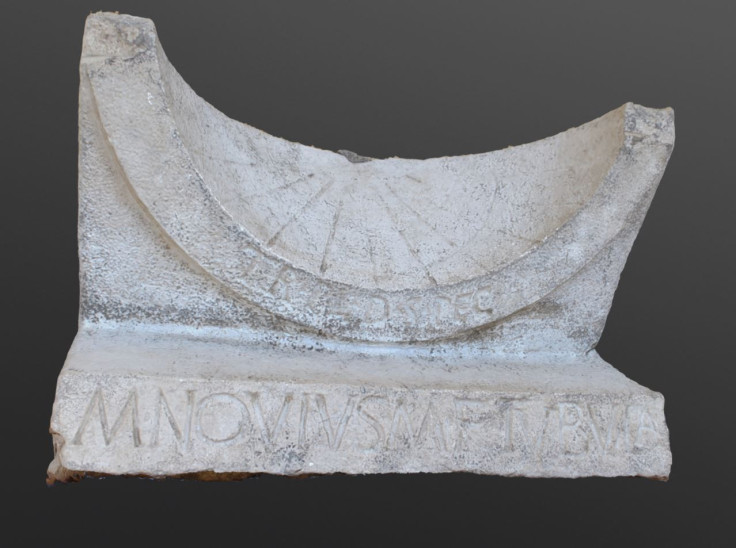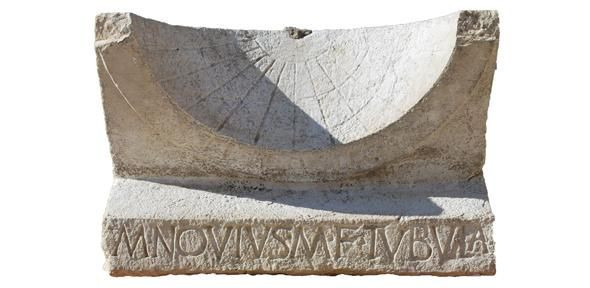Archaeologists Find Rare Ancient Roman Sundial Still Inscribed With Owner's Name

Archaeologists digging at a theater have uncovered an ancient Roman sundial that a man had built to celebrate winning an election to public office.
The 2,000-year-old sundial, a rare find because it is intact, according to the University of Cambridge, contains an inscription in ancient Roman lettering on its base that translates to the man’s name, “Marcus Novius Tubula, son of Marcus” and another on the dial that says he was a plebeian tribune.
That powerful office was created to represent the plebeians, the commoners of ancient Rome, and helped balance the power of the upper classes in government. By the time Tubula was elected, there may have been as many as 10 tribunes of the plebs.
The sundial was found at a roofed theater in central Italy, between Rome and Naples, at the site of an old Roman town called Interamna Lirenas. It was facedown when it was discovered and according to the university, it is possible that scavengers who were looking for building materials at the theater and the ancient town during the Middle Ages, or perhaps after medieval times, left the artifact behind. It could have been moved to the spot from atop a pillar somewhere near the theater.
“Less than a hundred examples of this specific type of sundial have survived and of those, only a handful bear any kind of inscription at all — so this really is a special find,” researcher Alessandro Launaro said in the university statement. “Not only have we been able to identify the individual who commissioned the sundial, we have also been able to determine the specific public office he held in relation to the likely date of the inscription.”
The lettering indicates that Tubula commissioned the limestone piece and paid for it with his own money and its style suggests that happened in the middle of the 1st century BCE, when the people of Interamna Lirenas had Roman citizenship.
“The sundial would have represented his way of celebrating his election in his own hometown,” Launaro said.
This town was not very special at all during ancient times, and that’s exactly what makes it so special to archaeologists today.
“This was not a town of remarkable prestige or notable influence,” Launaro explained. “It remained an average, middle-sized settlement, and this is exactly what makes it a potentially very informative case-study about conditions in the majority of Roman cities in Italy at the time. … In this sense, the discovery of the inscribed sundial not only casts new light on the place Interamna Lirenas occupied within a broader network of political relationships across Roman Italy, but it is also a more general indicator of the level of involvement in Rome’s own affairs that individuals hailing from this and other relatively secondary communities could aspire to.”
While the name Novius was common in the area, the university said, the name Tubula, which translates to “small trumpet,” is specific to the town.
According to the university, the spherical style of the sundial was fairly common. It was called “hemicyclium” and, in addition to an iron needle that indicated the hour by casting a shadow across the engraved lines of the clock face, featured curves that indicated the seasons.
It is almost 2 feet across.

© Copyright IBTimes 2024. All rights reserved.




















